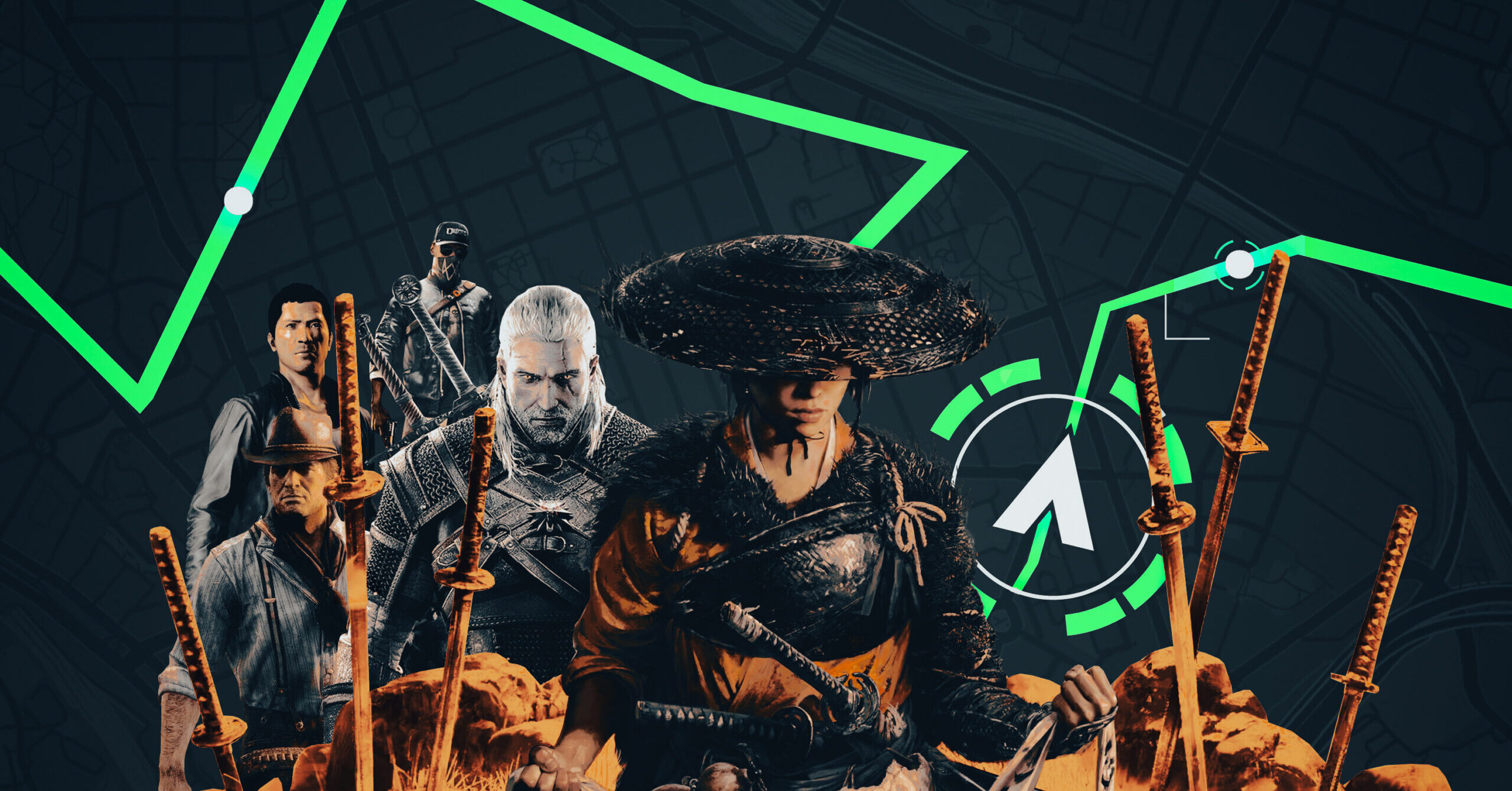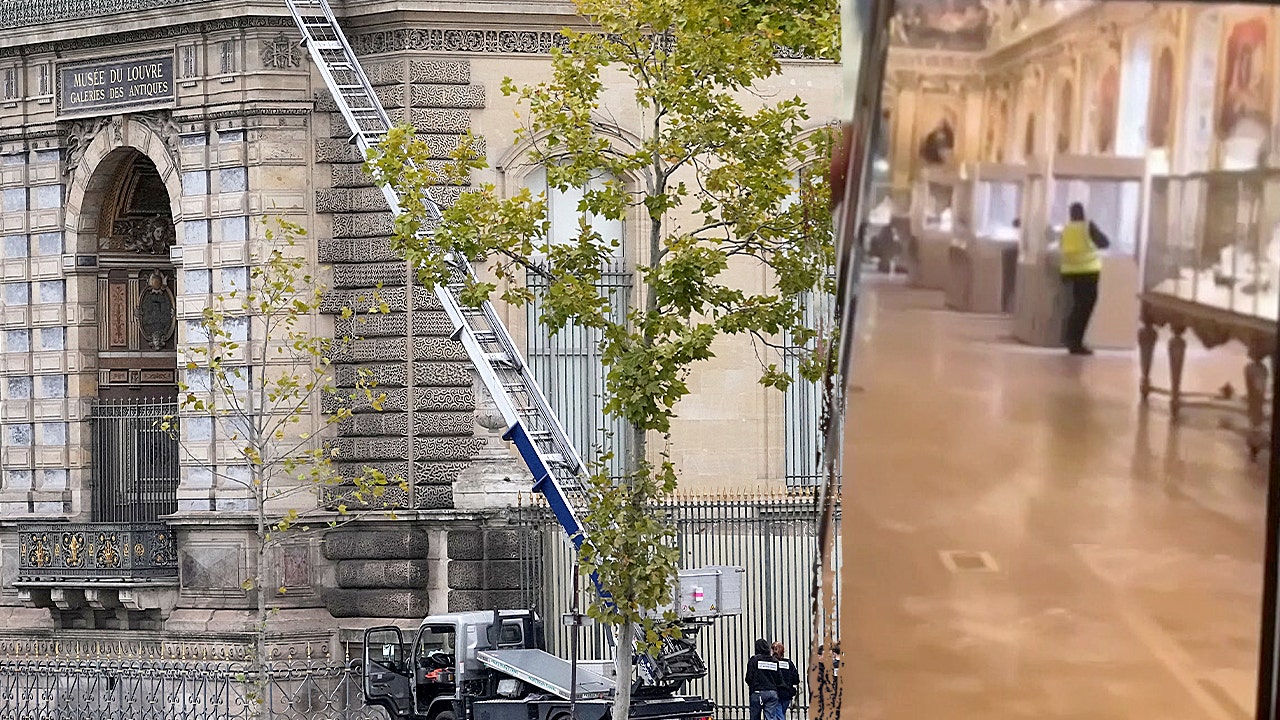Copyright The Ringer

If good artists copy and great artists steal, then what happens when every artist pursues the same prize? Passing around the same $20 bill in the form of an open-world video game about revenge and the cost of a violent life, starring a stoic protagonist, who can't help but frequently diverge from their grim mission to help villagers, indulge in sightseeing, and possibly solve a puzzle or two? Can any of those artists be good, much less great? Ghost of Yotei, the latest PlayStation game from Sony-owned developer Sucker Punch, doesn't try to hide its thematic influences. Its story, about a woman named Atsu who’s seeking revenge on the gang of brigands who murdered her family, cribs generously from films like Lady Snowblood, Seven Samurai, and Yojimbo. The game is less interested in tracing its design lineage, but marketing does that just fine: It's a PlayStation Studios game, and those have a house style. The pattern's been set for some time now, with games like 2017’s Horizon: Zero Dawn and 2018's God of War (and their sequels) following in the footsteps of Uncharted and The Last of Us developer Naughty Dog—a game that feels like a movie, strives for photorealism, takes itself seriously, and is preferably set in an open world full of things to do. Style, however, is the problem here. Style is how you keep people from noticing that you are playing a very familiar tune—and, if you're good enough, how you get them to praise you for it. Style is what pushes a work over the edge from impressive and compulsively playable to cool, and maybe even culturally significant. Style is idiosyncratic and palpable, and in the increasingly fraught and high-stakes world of big-budget video game development, might even be more important than substance. Ghost of Yotei makes for a great case study in style. Here is a partial list of Cool Things in the game: The title The weaponry and armor of various warrior castes circa 17th-century Japan Your sort-of pet wolf who will fight with you when they feel like it The approximately one million dramatic shots of your character staring down a rival in a windy field as flower petals fall Zeni Hajiki, a gambling game that's kind of like marbles but is played with coins and has become a very big problem for me But is Ghost of Yotei itself cool? I'm not sure that it is. Being full of cool things does not make a thing cool; that's a collection, not a quality. Yotei pursues its genre pastiche not just in story content, but in form. The game includes three "filmmaker modes" that aesthetically tweak the experience: Kurosawa Mode applies a black-and-white filter and defaults to Japanese audio; Miike Mode, named for Takashi Miike, seeks to emulate 13 Assassins by bringing the camera close and upping the blood and mud; Watanabe Mode looks to Shinichiro Watanabe's anime Samurai Champloo and pipes in lo-fi hip-hop beats to kill samurai to. All of these modes compromise the experience in some way. The black-and-white filter negates Yotei's careful use of color, which is meant to guide the player through the world; the chill beats are discordant with the overly somber tone of the game's narrative; and Miike Mode, as the game warns you, makes it so you won't see some enemies you normally would, upping the challenge considerably. A more stylish game would pursue these flourishes more holistically, employing them to bolster the experience without hampering it. Instead they feel like roads not taken, little glimmers of the Sucker Punch that used to make Sly Cooper games. Yet there is some whimsy tucked away in a few of Yotei’s many side activities, which hints at a playful studio eager to engage with players in a way that is unapologetically video-gamey. Among my favorite things to do in Yotei are the Bamboo Strikes: little stands with bamboo poles mounted on them for you to cut down with your sword. Doing this is more challenging than cutting most things in the game; you have to hit a sequence of three to seven buttons in the time it takes for Atsu to slice through every bamboo pole in one fluid motion. Execute a Bamboo Strike successfully, and sometimes a piece of bamboo will fly upward for you to slice mid-air with another button combo, just as a little flourish. The game incentivizes you to do these activities (as it incentivizes you to do everything) by tying them to one of the most useful rewards: Bamboo strikes increase Atsu's maximum Spirit, which is used for healing or exceptionally punishing attacks. But Bamboo Strikes are also worth doing because they're cool as shit, little arcade-style challenges in an otherwise very serious game interested in verisimilitude. They’re also the one way in which anyone in the game is having any fun. Early on, some people challenge Atsu to do a bamboo strike after downing a jug of sake; pull it off, and they lose their minds. In another region, a samurai doubts Atsu's skill because she is a woman; nail the bamboo strike, and the asshole loses his hat in a bet. Complete the bamboo strikes in a verdant hideaway with nary a soul in sight, and little foxes will come out and dance in delight. When you consider this, and other, less-playful-but-still-engaging activities, the idea that Ghost of Yotei is a revenge story is kind of bunk. All of Sony's big first-party games aren't really stories. They have stories—many stories, even—but the games are meant to be theme parks designed to drive up engagement, or Sunday crossword pages where the puzzles are all solved with the right weapon to crush the right defense, thereby liberating limbs from your opponents. (18 Across: A sickle-like blade on a chain, best used against shields.) There is nothing inherently wrong with this approach. Ghost of Yotei puts tremendous effort into depicting the dismemberment of samurai; it also wants you to note the breeze through the mountains, caressing technicolor flower patches as you summit a majestic peak. It wants you to be invested in sating Atsu's thirst for revenge and her desire for artistic fulfillment as a musician. It's a bloody rampage through the countryside of a culture it also wants to respect. These contradictory goals are quite silly, and they are not new to the world of video games. This dissonance doesn't mean that good, engaging storytelling can't be done in an open-world video game. Every few years there's a terrific example: The Witcher 3 is a perennial favorite, as are Assassin's Creed 2 and the Red Dead Redemption games. These classics work in concert with the incongruity of open-world video games, providing narrative peaks to punctuate the fantasy of spending time in their richly imagined locales. Unfortunately for Yotei, its narrative is quite conventional, echoing some of the greats in addition to its PlayStation Studios labelmates. Which, again, is fine: Story is just one of the many things open-world games have to offer. Style, then, can fill the gap. On paper, the 2016 Ubisoft game Watch Dogs 2 is about as conventional as open-world games get: sprawling map, loads of sidequests, plenty of doodads to collect. But the game was about hacktivists, and really wanted to immerse the player in its characters' mindsets. Hence an anthemic, maximalist score by producer Hudson Mohawke—a regular collaborator with Yeezus-era Kanye and peak Drake—and its in-game fashion, which nodded to the Bay-area tech bro functionality the game was interested in lampooning but also offered louder, more vibrant outfits that bucked against such conformity. The game had players inhabit not just a world, but an attitude, one that was reinforced with every hack you initiated at the push of a button. 2012's Sleeping Dogs is another great case study in open-world cool. Like Ghost of Yotei, it’s a pastiche, a celebration and remix of Hong Kong action movie tropes. To achieve this, developer United Front Games built its systems to reinforce that specific fantasy: Guns, for example, are both rare and cumbersome to use, far less exciting than the kung fu available to the player. Crucial to both examples is that their approach to style is comprehensive: The way the games look and sound informs how they play. The result is something that's not just fun but cool, a work that is assured in its execution even if some of its individual parts may be lacking. Do I remember the main plots of each of those games? Absolutely not. But I sure as hell remember playing them and how they felt: rad as hell and interested in giving me more than just a suite of compelling gameplay challenges to explore. With this in mind, Ghost of Yotei's stoicism is its biggest hindrance. It reaches in many directions and doesn’t settle on a comportment to face them all with, beyond severity. This is strange for a game that is effectively a period piece take on Kill Bill, one of the most aggressively stylish films ever made. Instead, Yotei is inert, relying on momentum and constantly pulling you from one point of interest to another via the wind, a bird, or foxes to show the way. There’s no confidence in the carefully constructed fantasy that being a wandering swordswoman will be compelling in and of itself. It’s the opposite of cool: self-conscious. And maybe that is what separates a good open-world game like this from a great one. A little goddamn panache.



